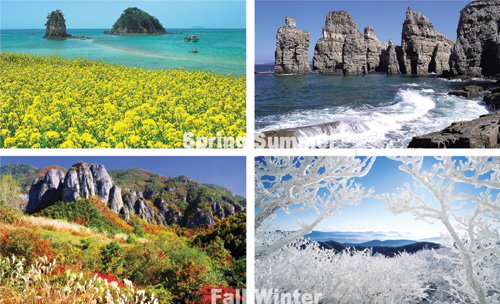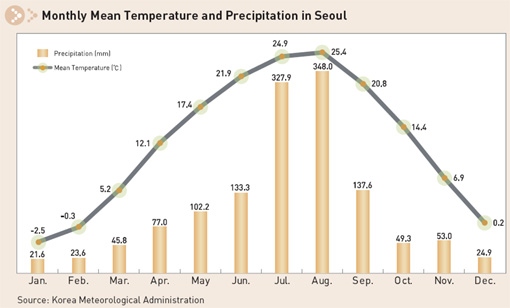
Korea has four distinct seasons. Spring and autumn are rather short, summer is hot and humid, and winter is cold and dry with abundant snowfall, especially in the mountainous regions, but not along the southern coast.
Temperatures differ widely from region to region within Korea, with the average being between 6°C (43°F) and 16°C (61°F).
In early spring, Siberian winds pick up "yellow dust" from thawing deserts in northern China and carry it to the peninsula and Japan. But in mid-April, the country also enjoys balmy weather with the mountains and fields garbed in brilliant wild flowers. Farmers prepare seedbeds for the annual rice crop at this time. Autumn, with its crisp air and crystal blue sky, is the season most widely loved by Koreans. The countryside is particularly beautiful, colored in a multitude of rustic hues. Autumn, the harvest season, features various folk festivals rooted in ancient agrarian customs.
